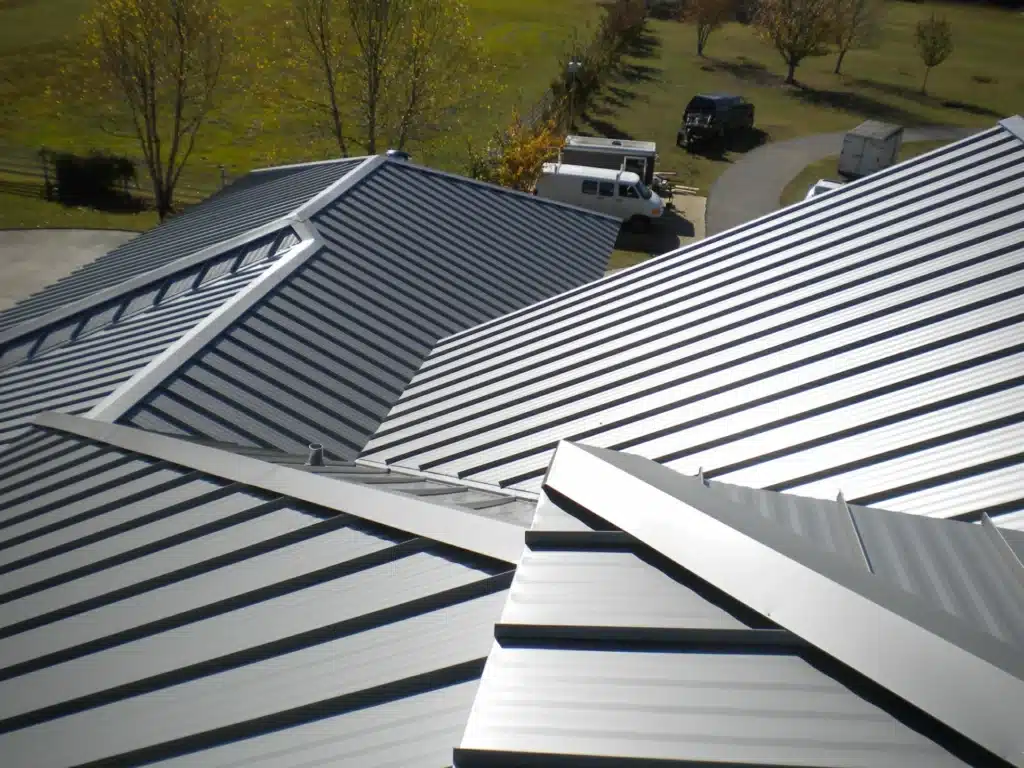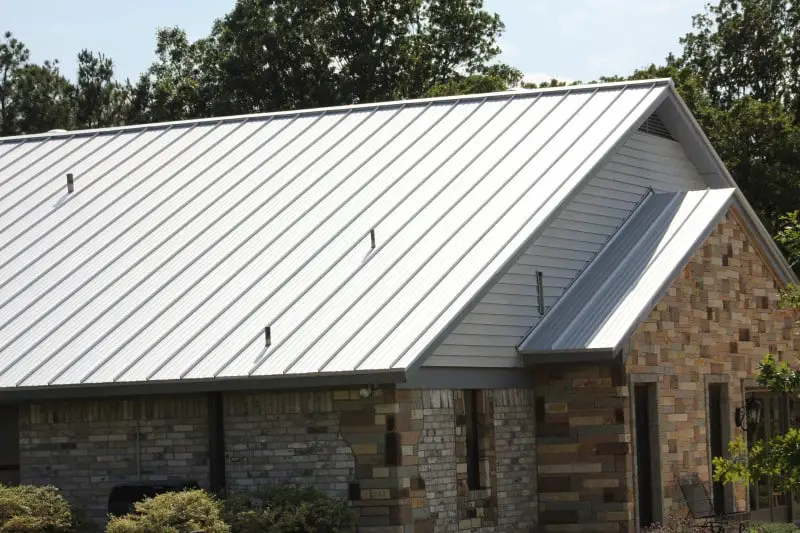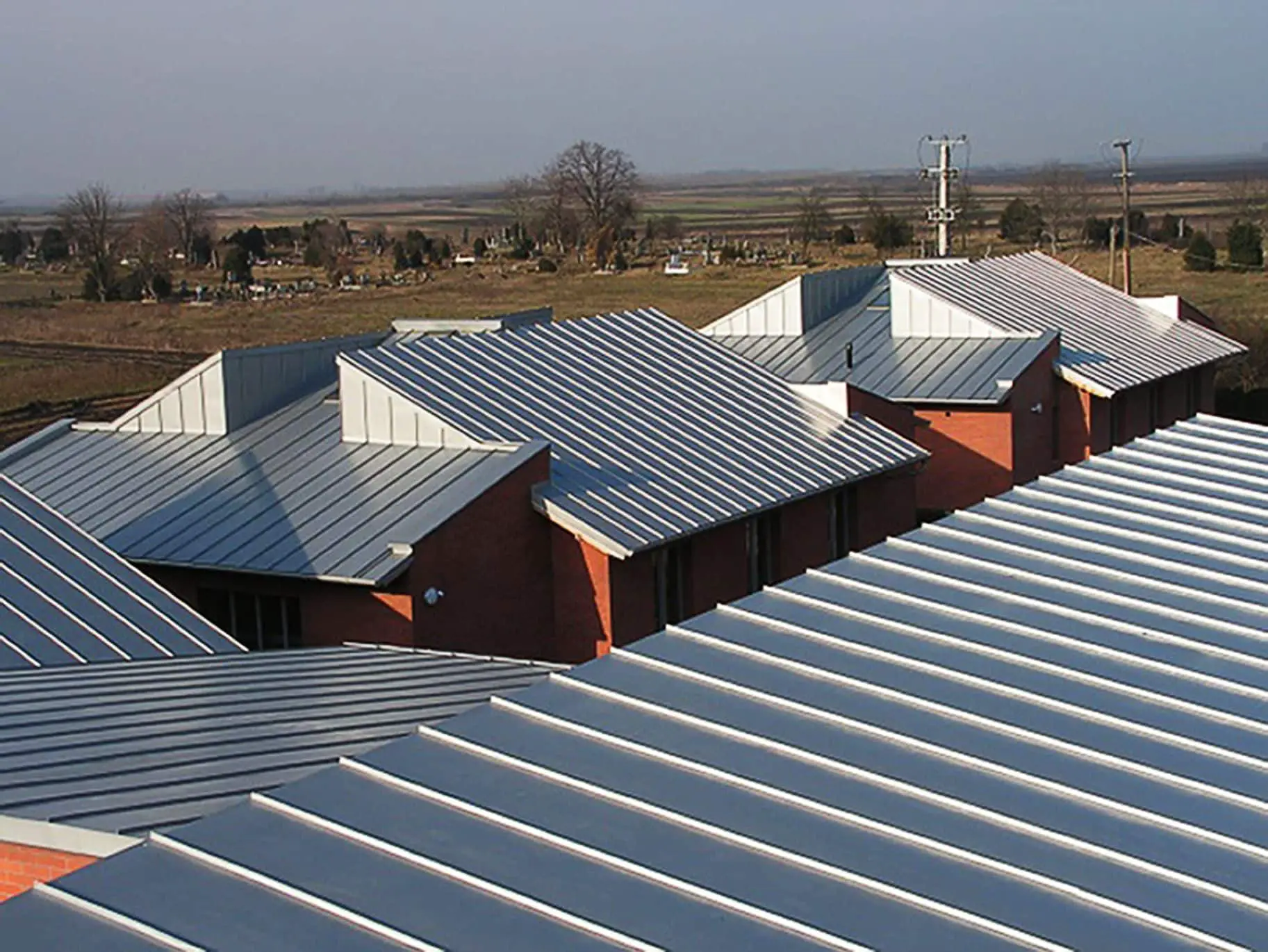How To Cut Metal Roofing Panels
Introduction
How To Cut Metal Roofing Panels: Metal roofing panels are a popular choice for homeowners and contractors alike due to their durability, longevity, and aesthetic appeal. Whether you are looking to install a new roof or replace an existing one, knowing how to cut metal roofing panels is essential for a successful project. In this article, we will provide you with step-by-step instructions on how to cut metal roofing panels effectively and safely.
Before we delve into the cutting process, it is important to understand the different types of metal roofing panels available in the market. Metal roofing panels come in various materials such as steel, aluminum, and copper, each with its own unique characteristics and benefits. Steel panels are known for their strength and affordability, while aluminum panels are lightweight and resistant to corrosion. Copper panels, on the other hand, offer a distinct and elegant look that ages beautifully over time.
Once you have chosen the type of metal roofing panel that suits your needs, it is time to prepare for the cutting process. Safety should always be a top priority when working with metal, so make sure to wear appropriate protective gear such as gloves, safety glasses, and ear protection. Additionally, ensure that you have the necessary tools for the job, including a circular saw with a metal-cutting blade, tin snips, and a tape measure.
When it comes to cutting metal roofing panels, precision is key. Start by measuring the desired length of the panel using a tape measure and marking it with a pencil or marker. Next, secure the panel firmly in place using clamps or a vice to prevent any movement during the cutting process. If you are using a circular saw, make sure to adjust the blade depth to slightly deeper than the thickness of the metal panel to ensure a clean and accurate cut.
In conclusion, knowing how to cut metal roofing panels is crucial for any roofing project. By understanding the different types of metal roofing panels available, preparing adequately, and using the right tools and techniques, you can achieve precise and professional-looking cuts. Remember to prioritize safety at all times and take your time to ensure accuracy. In the next sections of this article, we will explore specific cutting methods for different types of metal roofing panels, providing you with detailed instructions and tips for a successful installation or replacement project.

What is the easiest way to cut metal roofing?
Tin Snips. Tin snips are a manual, handheld tool that is perfect for cutting small pieces of metal roofing. They work best when the pieces aren’t too large or for small angles that are hard to cut using a larger tool.
Introduction:
Metal roofing is a popular choice for many homeowners due to its durability and longevity. However, when it comes to cutting metal roofing, it can be a challenging task if you don’t have the right tools and techniques. In this article, we will explore the easiest way to cut metal roofing and provide you with some valuable tips to ensure a successful outcome.
Methods for cutting metal roofing:
There are several methods you can use to cut metal roofing, depending on the tools you have available and the complexity of the cuts required. One of the easiest and most common methods is using a circular saw with a metal-cutting blade. This method allows for precise and clean cuts, especially when combined with a guide or straight edge to ensure straight lines.
Another method that can be used is a nibbler, which is a specialized tool designed specifically for cutting metal. Nibblers work by punching small holes in the metal and then cutting along the edges of these holes. This method is ideal for making curved or intricate cuts, as it provides more control and maneuverability compared to a circular saw.
When using either a circular saw or a nibbler, it is important to wear appropriate safety gear, such as safety glasses and gloves, to protect yourself from any flying debris or sharp edges. Additionally, make sure to secure the metal roofing properly before cutting to prevent any movement or vibrations that could affect the accuracy of your cuts.
Other tools that can be used for cutting metal roofing include tin snips, aviation snips, or a metal shear. Tin snips are handheld cutting tools that are suitable for making small, straight cuts or trimming edges. Aviation snips, also known as compound snips, are designed for cutting curves and circles in metal. Metal shears, on the other hand, are electric or pneumatic tools that can quickly and efficiently cut through metal roofing sheets.
The easiest way to cut metal roofing depends on the specific requirements of your project and the tools you have available. Using a circular saw with a metal-cutting blade or a nibbler are two common methods that provide precise and clean cuts. However, tin snips, aviation snips, and metal shears can also be used depending on the complexity of the cuts needed. Remember to prioritize safety by wearing appropriate protective gear and securing the metal roofing before cutting. With the right tools and techniques, cutting metal roofing can be a manageable task that allows you to achieve the desired results.
What is the best tool to cut metal roofing?
Tin Snips. Tin snips are a manual, handheld tool that is perfect for cutting small pieces of metal roofing. They work best when the pieces aren’t too large or for small angles that are hard to cut using a larger tool. Again, these will be used to cut out pieces from the center of your metal roofing with ease.
Introduction:
When it comes to cutting metal roofing, having the right tool is essential to ensure precise and efficient results. With numerous options available in the market, it can be overwhelming to choose the best tool for this task. However, by considering factors such as the type of metal roofing, the thickness of the material, and the desired cutting method, you can make an informed decision. In this article, we will explore some of the top tools that are widely recommended for cutting metal roofing.
Electric Metal Shears:
One of the most popular tools for cutting metal roofing is electric metal shears. These powerful tools are designed specifically for cutting through metal sheets with ease. Electric metal shears feature sharp blades that rapidly move back and forth, creating clean and precise cuts. They are particularly useful for cutting straight lines and curves in metal roofing. Additionally, electric metal shears often come with adjustable settings, allowing you to control the cutting speed and depth, making them suitable for various thicknesses of metal roofing.
Tin Snips:
Another commonly used tool for cutting metal roofing is tin snips. These handheld cutting tools are ideal for smaller projects or when you need to make precise cuts in tight spaces. Tin snips come in different types, including straight-cut, left-cut, and right-cut, each designed for specific cutting directions. While tin snips may not be as fast as electric metal shears, they offer excellent maneuverability and control, making them a preferred choice for intricate cutting tasks.
Metal Cutting Circular Saw:
If you are dealing with thicker metal roofing or need to make long, straight cuts, a metal cutting circular saw can be a valuable tool. These saws are equipped with specialized metal-cutting blades that can effortlessly slice through metal sheets. The circular saw’s adjustable depth settings allow you to control the cutting depth, ensuring clean and accurate cuts. However, it is important to note that using a metal cutting circular saw requires proper safety precautions, such as wearing protective eyewear and gloves.
Choosing the best tool to cut metal roofing depends on various factors such as the type of metal, thickness, and cutting requirements. Electric metal shears are highly recommended for their versatility and efficiency, while tin snips are ideal for intricate and precise cuts. For thicker metal roofing or straight cuts, a metal cutting circular saw can provide excellent results. Ultimately, selecting the right tool will depend on the specific needs of your metal roofing project. It is always advisable to follow safety guidelines and consult professionals if you are unsure about the appropriate tool or technique to use.
What is the best tool for cutting corrugated sheet metal?
Introduction:
When it comes to cutting corrugated sheet metal, having the right tool is essential to ensure precise and efficient results. With the wide range of tools available in the market, it can be overwhelming to choose the best one for this specific task. However, by considering factors such as the thickness of the metal, the desired cut, and personal preferences, you can find the perfect tool for the job.
Factors to consider:
One of the primary factors to consider when selecting a tool for cutting corrugated sheet metal is the thickness of the material. Thicker metals require more powerful tools, such as electric shears or nibblers, to achieve clean and accurate cuts. On the other hand, for thinner metals, handheld tools like tin snips or aviation snips can be sufficient.
Types of tools:
Electric shears are a popular choice for cutting corrugated sheet metal due to their ability to effortlessly slice through thick materials. These tools feature a powerful motor and a set of sharp blades that make quick work of even the toughest metals. Additionally, electric shears often have adjustable settings, allowing you to customize the cutting speed and depth according to your needs.
Nibblers are handheld tools that work by punching small holes in the metal and then cutting along the edges of these holes. This method provides excellent control and precision, making it ideal for intricate cuts or curved shapes. Nibblers are available in both electric and manual versions, with electric nibblers being more suitable for heavy-duty cutting tasks.
Choosing the best tool for cutting corrugated sheet metal depends on various factors, including the thickness of the material and the desired cut. Electric shears and nibblers are two popular options that offer efficient and precise cutting capabilities. Ultimately, selecting the right tool will ensure that you achieve professional-looking results while minimizing the effort and time required for the task.
What is the best tool for cutting steel sheet metal?
A reciprocating saw also known as an oscillating saw is the most common and useful metal cutting tool. It is capable of cutting metal fast and efficiently. Reciprocating saws are among the most powerful and aggressive saws.
Introduction:
When it comes to cutting steel sheet metal, having the right tool is crucial for achieving precise and efficient results. With a wide range of options available in the market, it can be overwhelming to choose the best tool for this task. However, by considering factors such as the thickness of the metal, the desired cutting method, and the level of precision required, you can make an informed decision. In this article, we will explore some of the top tools for cutting steel sheet metal and discuss their features and benefits.
Option 1: Plasma Cutter
One of the most popular tools for cutting steel sheet metal is a plasma cutter. This tool utilizes a high-velocity jet of ionized gas, known as plasma, to melt through the metal. Plasma cutters are highly versatile and can cut through various thicknesses of steel with ease. They offer precise and clean cuts, making them suitable for both intricate designs and straight cuts. Additionally, plasma cutters are relatively fast, allowing for efficient completion of projects. However, it is important to note that plasma cutters can be expensive and require a power source, making them more suitable for professional or industrial use.
Option 2: Angle Grinder
Another tool commonly used for cutting steel sheet metal is an angle grinder. This handheld power tool features a rotating disc that can be fitted with a cutting wheel suitable for metal. Angle grinders are affordable and widely available, making them a popular choice for DIY enthusiasts and small-scale projects. They offer flexibility in terms of cutting angles and can handle different thicknesses of steel. However, it is important to exercise caution when using an angle grinder, as they can be more challenging to control compared to other tools. Safety gear, such as goggles and gloves, should always be worn when operating an angle grinder.
Option 3: Shears
For those seeking a more traditional approach, shears can be an excellent tool for cutting steel sheet metal. Shears are handheld tools that use a scissor-like mechanism to cut through the metal. They are particularly suitable for thinner sheets of steel and offer precise and clean cuts. Shears are relatively affordable and easy to use, making them a popular choice for hobbyists and small-scale projects. However, it is important to note that shears may not be as efficient for cutting thicker sheets of steel or for complex designs.
The best tool for cutting steel sheet metal depends on various factors such as the thickness of the metal, the desired cutting method, and the level of precision required. Plasma cutters are ideal for professional or industrial use, offering precise and efficient cuts. Angle grinders are a versatile and affordable option suitable for DIY enthusiasts. Shears provide a traditional approach and are well-suited for thinner sheets of steel. By considering your specific needs and budget, you can select the most suitable tool for your steel sheet metal cutting projects.
What is the method of cutting sheet metal?
The most popular traditional sheet metal techniques are shearing-type cutting (e.g. punching), waterjet, plasma, EDM, and lasers.
Sheet metal cutting is a common process used in various industries to shape and manipulate metal sheets for different purposes. It involves the removal of material from a metal sheet to create the desired shape or size. There are several methods available for cutting sheet metal, each with its own advantages and limitations. In this article, we will explore some of the most commonly used methods for cutting sheet metal and discuss their applications.
One of the most traditional methods of cutting sheet metal is through the use of shears or scissors. This method is suitable for cutting thin sheets of metal and is often used in small-scale projects or for simple shapes. Shears or scissors can be operated manually or powered by electricity, depending on the size and thickness of the metal sheet. However, this method may not be suitable for cutting thicker or harder metals, as it may require excessive force and result in uneven cuts.
Another commonly used method for cutting sheet metal is using laser cutting technology. Laser cutting is a precise and efficient method that uses a high-powered laser beam to melt or vaporize the metal sheet along the desired cutting line. This method is highly accurate and can produce intricate shapes with smooth edges. Laser cutting is commonly used in industries such as automotive, aerospace, and electronics, where precision and quality are crucial.
Plasma cutting is another popular method for cutting sheet metal. It involves the use of a plasma torch that generates a high-velocity jet of ionized gas, which melts and blows away the metal to create the desired cut. Plasma cutting is suitable for cutting a wide range of metals, including stainless steel, aluminum, and copper. It is often used in industries such as construction, shipbuilding, and metal fabrication, where speed and versatility are important.
Waterjet cutting is a method that utilizes a high-pressure stream of water mixed with abrasive particles to cut through sheet metal. This method is highly versatile and can cut through a wide range of materials, including metals, plastics, and composites. Waterjet cutting is known for its precision and ability to produce intricate shapes without heat-affected zones or mechanical stresses. It is commonly used in industries such as architecture, art, and manufacturing.
There are several methods available for cutting sheet metal, each with its own advantages and applications. The choice of method depends on factors such as the thickness and type of metal, the desired cut quality, and the specific requirements of the project. Whether it is through traditional shears, advanced laser cutting, plasma cutting, or waterjet cutting, the goal is to achieve precise and efficient cuts that meet the desired specifications. By understanding the different methods available, manufacturers and fabricators can choose the most suitable cutting technique for their specific needs.
When it comes to cutting metal roofing panels, there are several methods you can choose from depending on the tools you have and the specific requirements of your project. One common method is using a circular saw with a metal-cutting blade. This allows for fast and efficient cuts, especially when dealing with thicker panels. Another option is using a nibbler, which is a handheld tool specifically designed for cutting metal. Nibblers are great for making intricate cuts and can easily navigate around curves and corners.
If you prefer a more traditional approach, you can also use tin snips or aviation snips. These handheld cutting tools are ideal for smaller projects or when you need to make precise cuts. They come in different types, such as straight-cut, left-cut, and right-cut, allowing you to easily maneuver through the metal. Additionally, if you have access to a power shear, it can make the cutting process even faster and more efficient.
Regardless of the method you choose, it is important to ensure that you have the appropriate safety equipment, such as gloves and safety glasses, to protect yourself from any potential hazards. Always follow the manufacturer’s instructions for the tools you are using and take necessary precautions to avoid accidents or injuries.
What tools are required to cut metal roofing panels?
When it comes to cutting metal roofing panels, there are several tools that are essential for achieving precise and clean cuts. These tools ensure that you can work efficiently and effectively, resulting in a professional-looking finished product.
Circular Saw: A circular saw with a metal-cutting blade is one of the most commonly used tools for cutting metal roofing panels. It is versatile and allows for straight cuts with ease. Make sure to use a blade specifically designed for cutting metal to ensure clean and accurate cuts.
Electric Shears: Electric shears are another popular tool for cutting metal roofing panels. They are lightweight and easy to maneuver, making them ideal for cutting curves and intricate shapes. Electric shears provide clean and precise cuts, minimizing the risk of damaging the panels.
Tin Snips: Tin snips are handheld cutting tools that are perfect for making small, detailed cuts on metal roofing panels. They are particularly useful for cutting notches, corners, and intricate patterns. Tin snips come in different types, including straight-cut, left-cut, and right-cut, allowing for versatility in cutting various angles.
Angle Grinder: An angle grinder equipped with a metal-cutting disc is a powerful tool for cutting metal roofing panels. It is especially useful for making quick and straight cuts. However, it requires a steady hand and caution to ensure accuracy and prevent any accidental damage.
Nibbler: A nibbler is a specialized tool designed specifically for cutting metal. It operates by punching small holes and then cutting along the edges. Nibblers are ideal for cutting curves and irregular shapes, providing clean and precise cuts without distorting the metal.
Overall, having the right tools for cutting metal roofing panels is crucial for achieving clean and precise cuts. Whether you opt for a circular saw, electric shears, tin snips, angle grinder, or nibbler, each tool has its own advantages and is suitable for different cutting requirements. Remember to prioritize safety by wearing appropriate protective gear and following the manufacturer’s instructions for each tool.
Are there any safety precautions to consider while cutting metal roofing panels?
When cutting metal roofing panels, it is crucial to prioritize safety to prevent accidents and injuries. Here are some important safety precautions to consider:
Wear protective gear: Before starting any cutting work, ensure that you are wearing appropriate protective gear such as safety goggles, gloves, and ear protection. Metal shavings and debris can cause serious eye injuries, and the noise generated during cutting can damage your hearing.
Use a stable work surface: It is essential to work on a stable and secure surface to avoid slips or falls. If possible, use a workbench or a sturdy platform to provide a stable base for cutting the metal roofing panels.
Use the right tools: Make sure you have the correct tools for cutting metal roofing panels. This typically includes tin snips, electric shears, or a circular saw with a metal-cutting blade. Using the wrong tools can not only result in poor cuts but also increase the risk of accidents.
Secure the panels: Before cutting, ensure that the metal roofing panels are securely fastened or clamped down. This prevents them from shifting or moving during the cutting process, reducing the risk of accidents and producing cleaner cuts.
Be mindful of electrical hazards: If you are using power tools, be cautious of electrical hazards. Ensure that the tools are properly grounded, and avoid cutting near electrical wires or outlets. If necessary, turn off the power supply to the area where you are working to eliminate the risk of electric shock.
By following these safety precautions, you can minimize the risk of accidents and injuries while cutting metal roofing panels, ensuring a safe and successful project.
How can I ensure clean and precise cuts when cutting metal roofing panels?
When it comes to cutting metal roofing panels, achieving clean and precise cuts is crucial for a successful installation. To ensure the best results, there are several key factors to consider.
Choose the right tool: Using the appropriate cutting tool is essential for clean and precise cuts. One of the most common tools for cutting metal roofing panels is a circular saw with a metal-cutting blade. This type of blade is specifically designed to cut through metal and will provide clean and accurate cuts. Additionally, a nibbler or shears can be used for smaller, more intricate cuts.
Measure and mark accurately: Before making any cuts, it is important to measure and mark the panels accurately. Use a measuring tape and a straight edge to ensure precise measurements and straight lines. Double-check your measurements before cutting to avoid any mistakes that could result in uneven or jagged cuts.
Secure the panels: To prevent the panels from shifting or vibrating during the cutting process, it is crucial to secure them properly. Use clamps or a vice to hold the panels firmly in place. This will help maintain stability and ensure cleaner cuts.
Take it slow: Rushing through the cutting process can lead to mistakes and imprecise cuts. Take your time and cut slowly, allowing the blade to do the work. Applying too much pressure or forcing the blade can cause the metal to warp or result in jagged edges. By cutting at a steady pace, you can achieve cleaner and more precise cuts.
By following these tips and taking the necessary precautions, you can ensure clean and precise cuts when cutting metal roofing panels. Remember to always prioritize safety and wear appropriate protective gear, such as gloves and safety glasses, when working with metal and power tools.
Are there any specific techniques or tips for cutting metal roofing panels efficiently?
When it comes to cutting metal roofing panels efficiently, there are a few techniques and tips that can help you achieve clean and precise cuts. One important technique is to use a specialized metal cutting blade or shear. These tools are designed to cut through metal with ease and precision, ensuring a smooth and accurate cut. It is crucial to choose the right blade or shear for the thickness and type of metal roofing panel you are working with.
Another technique to consider is using a guide or straight edge to ensure straight cuts. This can be done by clamping a straight piece of wood or metal along the cutting line, providing a guide for your saw or shear to follow. This helps to prevent any wobbling or deviation from the desired cutting line, resulting in a cleaner and more accurate cut.
Additionally, it is important to maintain a steady and controlled cutting speed. Rushing through the cutting process can lead to mistakes and uneven cuts. Take your time and let the blade or shear do the work, allowing it to smoothly cut through the metal roofing panel. This will help you achieve cleaner and more precise cuts.

Conclusion
Cutting metal roofing panels can be a challenging task, but with the right instructions and techniques, it can be accomplished effectively and efficiently. By following the steps outlined in this guide, individuals can ensure that they achieve precise and clean cuts, resulting in a professional-looking finished product.
First and foremost, it is crucial to have the appropriate tools and safety equipment before attempting to cut metal roofing panels. This includes a circular saw with a metal-cutting blade, safety goggles, gloves, and ear protection. These tools will not only make the cutting process easier but also protect individuals from potential hazards.
Next, it is important to measure and mark the panels accurately before cutting. Taking precise measurements and using a straight edge or chalk line to mark the cutting line will help ensure that the panels are cut to the desired size and shape. This step is crucial in achieving a seamless and professional-looking installation.
When it comes to actually cutting the metal roofing panels, it is recommended to start with a slow and steady pace. Applying too much pressure or rushing the process can result in jagged or uneven cuts. By maintaining a consistent speed and allowing the saw to do the work, individuals can achieve smoother and cleaner cuts.
Cutting metal roofing panels requires careful planning, the right tools, and a methodical approach. By following the instructions provided in this guide, individuals can successfully cut metal roofing panels and achieve a high-quality finished product. Remember to prioritize safety, measure and mark accurately, and maintain a steady pace during the cutting process. With these tips in mind, individuals can confidently tackle their metal roofing project and enjoy the benefits of a durable and visually appealing roof.








